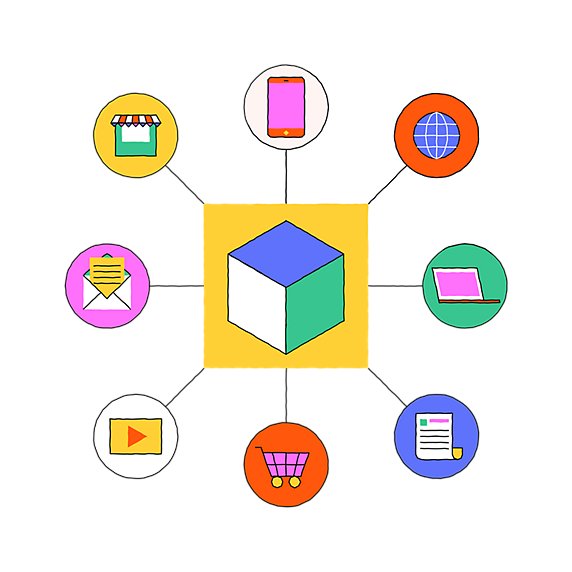
As any creative lead knows, maintaining brand consistency across teams is Creative Collaboration 101.
But as companies scale, so do their assets, teams and channels. It doesn’t take long before ensuring a unified look and message starts to feel like a lost cause. This is particularly true as workplaces have grown more dispersed, thanks to the work-from-home boom brought on by COVID-19.
If you want to stay consistent with your brand, but aren’t sure where to start, here are five strategies to help enforce brand integrity within a scaling business, without micromanaging every communication with every customer.
Strategy 1: Begin with your brand’s purpose.
In a 2019 study by the template vendor Lucidpress, CEOs and marketers from more than 200 companies estimated their organisations’ revenues would increase by a third if only they could be more consistent in their brand identity. One common reason companies struggle is a failure to anchor their brand’s identity to anything beyond a few approved fonts and colours. Hang your identity on your brand’s purpose — your company’s “why” that sees beyond the bottom line — and you’re guaranteed a consistency customers will quickly learn to trust.
Erin Colasacco has experienced this firsthand. She’s the creative director of On Being Studios, a non-profit media company known for their public radio show and podcasts. A big part of her job is collaborating with visual artists to create imagery that complements the organisation’s audio content. As their assets and offerings have increased, she and her team have made a practice of returning to On Being’s “grounding principles” when deciding who and what to commission next. The more they’ve done this, the easier the decision process has become, she says and the more their following and levels of engagement have grown.
For the companies still assembling those basic principles, Madison Hebner, founder and creative director of a successful brand design company, suggests thinking of your brand as a person — maybe a celebrity or a friend. “It’s not ‘What is your brand?’ but ‘Who is your brand?’” she explains. Breathing some life into your brand makes your message and mission responsive to a fast-changing world, rather than locked as a static tagline on a page.
Strategy 2: Create (or revise) a brand style guide.
Once you’ve defined a visual identity for your brand, make sure that you lay down some rules for how to use specific graphic design elements — including your logo, colour palette, typography, photography and iconography — as well as tone and voice guidelines for copy. For tips on how to treat each of these elements, check out How to create a brand style guide.
Remember, consistent is not the same as static. As your company grows and evolves to encompass new products and audiences, so should your style guide.
Strategy 3: Conduct a brand audit.
The growing opportunities to connect with customers are part of what makes being a creative leader in today’s world so rewarding — but it does come with a downside. With every new touchpoint comes the potential for a misstep. Luckily, a thorough checkup can help you to find any rogue elements. Audits like these should include everything down to email signatures, Madison says. “Funnily enough, those are one of the biggest issues I’ve seen.”
Don’t ignore your company’s physical content, either. Business cards, vinyl banners and even pens with your logo are all characters in your brand’s story. Their look should reflect that, whether that’s homespun and simple or glossy and elevated.
While evaluating each asset in your audit, ask yourself:
- Does the design feel consistent throughout?
- Is the messaging accurate and up to date?
- Are both the design and the messaging consistent with the tastes and values of our target audience?

Strategy 4: Communicate guidelines and contingency plans.
There may have been a time when it made sense for you to review every picture, caption, newsletter banner and GIF. Odds are, that time has passed — but you’re doing it anyway. Building trust in and empowering your team members is the only way you can stop sweating the small stuff and get back to thinking about brand strategy again.
There are multiple ways to help your team take a proactive role in fostering a reliable brand identity. Start with sending an internal newsletter — or simply a weekly email — to ensure easy access to new guidance and resources. Consider following up with a weekly meeting, either through video conference or in person, where you can answer questions and highlight standout examples of branding from the previous week. And to keep principles of good branding top of mind, create a channel where team members can share outside inspiration.
However you decide to enlist your team members as co-creators and enforcers of your brand’s identity, make sure that you include guidance on what to do when a customer experience fails to live up to the standards that you’ve set together. The same goes for any agencies or freelancers involved in creating content for your brand. All contributors need to know who to report issues to, and what they can personally do to help resolve them. In the end, they will be grateful for the guidance — and you’ll benefit from not having to micromanage every step.

Strategy 5: Organise assets and make them widely available.
We get it. No one got into creative direction to organise folders in a shared drive. As your team grows and assets proliferate, effective and efficient asset management only becomes more important to making sure your brand is runway-ready at all times. When picking a platform, look for one that operates securely and simply across any device and allows for seamless collaboration. In some cases, it might not be your platform that needs an upgrade, but how you use it. In either case, you’ll want to begin by asking yourself the following questions:
- What are our most important assets?
- Which ones do we use the most?
- Who needs access to which items?
- What categories make the most sense for how we plan to use our assets?
This final question is the most difficult — and the most important — as it relates to searchability. As the numbers of On Being’s images and contacts have swelled over the years, Erin Colasacco has relied more and more on a sophisticated tagging system. The system considers the medium and style of art, be it photography or graphic design, as well as the moods it evokes — and has saved her countless hours of digging.
More than a style guide.
Your brand identity is more than a list of fonts, images and colours. It’s an ethos that both your team and your customers can rely on in a fast-changing market. The benefits of a consistent brand identity go far beyond helping you to narrow your choices for your next caption on Instagram. Prioritise your brand purpose in every client interaction and you’ll inspire trust in your customers, who know they can rely on your brand and everything it represents.